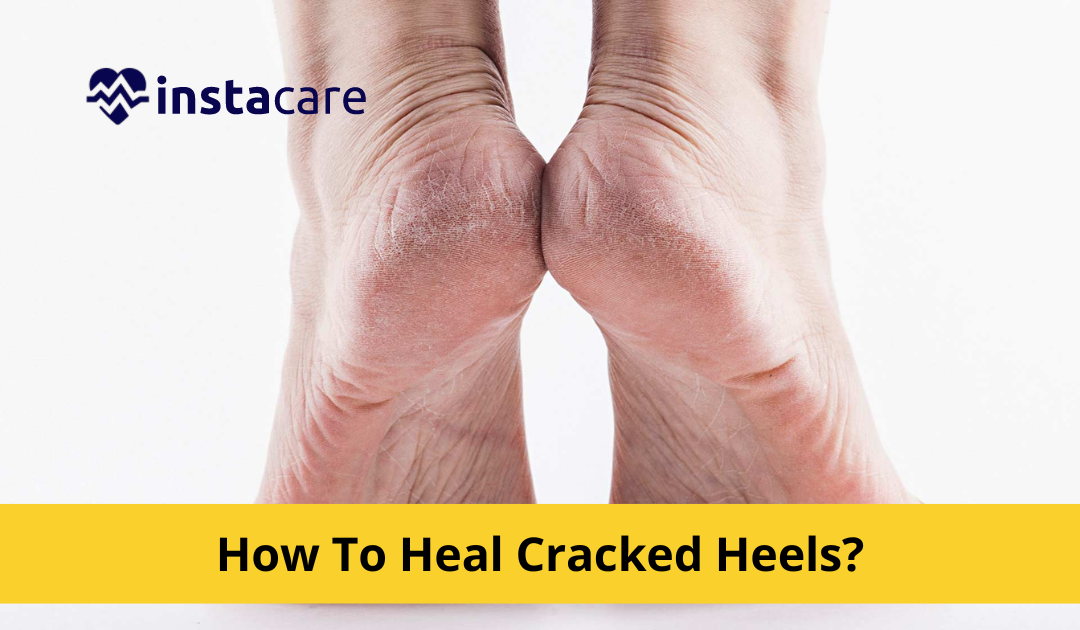A typical issue with the foot is a cracked heel. It happens when the thick, dry skin on the bottom of your heels splits and begins to crack.
If the heel fissures are left untreated and become deeper, it can be uncomfortable to walk and may become infected. If the cracks are mild, they are typically only a nuisance and may not look beautiful.
Causes And Risk Factors of Cracked Heels
A cracked heel can develop in numerous phases. The first symptom is the development of calluses, which are areas of dry, hard skin around the heel. The fat pads under your heels enlarge as you walk and exert additional pressure on the region, resulting in the calluses beginning to split somewhat.
Other elements that can result in cracked heels are as follows:
- Standing for extended periods of time, especially on surfaces with a firm surface
- Hard, unsupportive footwear such as thongs, open-back sandals, and shoes
- Walking barefoot, as this gives your feet no support.
- Obesity
- Getting hot, long showers
- Chronic illnesses like diabetes
The cracks might start to bleed as they deepen over time. If the cracks are serious, they may spread infection, and if you have diabetes, they may result in diabetic foot ulcerations.
Symptoms & Treatment of Cracked Heels
On top of having visible dry and cracked skin on your heels, you might also encounter the following signs and symptoms:
- Discomfort and pain, especially when standing
- There is itchiness there.
- Leaking blood from fissures
- Rough skin
- If there is an infection, warmth, redness, and swelling may be present.
How would you typically handle dry skin? You moisten!
Start by moisturizing your heels two to three times daily to help with symptom relief if your disease is minor. Before applying moisturizer, you can use a pumice stone to exfoliate any hard, dry skin that might hinder the moisturizer from soaking in properly.
View More: How to Get Rid of Dark Circles
If your symptoms don't go away after a week of routine foot care, it might be time to see one of our podiatrists. The following treatments could be prescribed:
- Using a scalpel blade, mechanically remove the thick calluses/fissures to lessen the buildup of skin.
- Foot balm for moisturizing and nourishing the skin. Similar to a moisturizer, but with the addition of urea, which significantly boosts efficiency
- Appropriate shoes with padded heel pads
- Using foot and ankle straps, wrap dressings or bandages around the heel to stop skin movement
Home Remedies For Cracked Heels
Creams, lotions, and ointments that are hydrating can aid in keeping moisture in the skin. This might stop the skin from breaking and drying out. Treatments that moisturize the skin can also help heal already-cracked skin.
Here are some home remedies for cracked heels:
Heavy Moisturizers Or Heel Balms
Using a heel balm is the first line of defense for cracked heels. These balms have chemicals that soften, hydrate, and scrub away dead skin. Watch careful for these ingredients:
- Urea (Flexitol Heel Balm) (Flexitol Heel Balm)
- Acid salicylate (Kerasal)
- A-Hydroxy acids (Amlactin)
- Glucose (isomerate)
These heel balms are available over-the-counter at pharmacies and online.
Honey
Honey may be effective as a home treatment for cracked heels. Honey contains antimicrobial and antibacterial effects. According to research, honey can hydrate the skin in addition to helping to cure and clean up wounds. After soaking your feet, you can scrub them with honey or leave a foot mask on overnight.
Coconut Oil
For psoriasis, eczema, and dry skin, coconut oil is frequently advised. It may aid in moisture retention for your skin. Coconut oil use following a foot soak may also be beneficial. If your cracked heels are prone to bleeding or infections, coconut oil's anti-inflammatory and antibacterial characteristics may help.
View More: Excellent Skin Care Tips
Further Organic Remedies
There are numerous additional at-home treatments for cracked heels, but none of them have been demonstrated to be effective. The majority of components work to hydrate and soften the skin.
These consist of:
- Using vinegar as a foot soak
- Vegetable or olive oil for moisturizing
- Shea butter, for hydration
- Banana mash as a moisturizer
- Paraffin wax, to keep moisture within
- Oil and oats combined for exfoliating
Conclusion
With moisturizers and skin-thinning creams, cracked heels can be quickly and easily detected at home. People should make sure to moisturize their legs every day to keep them from drying out in order to prevent cracked heels. In the event that cracked heels are a symptom of a medical issue, people should never attempt to treat them themselves. They should consult a doctor for advice instead. To avoid the wounds becoming infected, it is crucial to seek the specialist's assistance if the cracks are serious.
Please book an appointment with the best Dermatologist in Lahore, Karachi, Islamabad, and all major cities of Pakistan through InstaCare, or call our helpline at 03100002273 to find a verified doctor for your disease.











